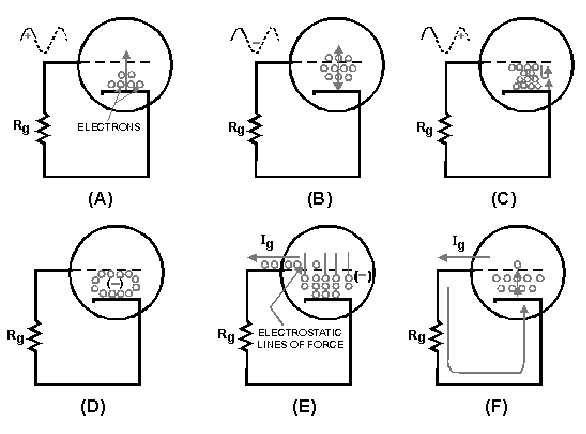2-10
Figure 2-9.—Effect of transit time at ultrahigh frequencies.
In effect, the area between the grid and cathode becomes highly negatively charged, as shown in
view D. This negative charge is surrounded by an electrostatic field. The electrostatic field cuts the grid
and repels electrons that are present in the grid. As electrons are forced from the grid, the grid tries to go
positive. Unfortunately, this tendency toward a positive charge attracts electrons from the mass or
bunched charge. Thus, as an electron is forced from the grid; it is replaced by another from the massed
charge. Electrons forced from the grid represent grid current (Ig), as shown in view E. The grid current
flows from the grid through Rg, to the cathode, from the cathode, to the massed charged, and back again
to the grid, The movement of current in this manner is, in effect, a path for current flow from the cathode
to the grid. Because current flows between the cathode and grid, the resistance (rgk) between these
elements is lowered to the point of a short circuit. The grid, in effect, is short circuited to the cathode and
ceases to function; and this, in turn, lowers tube efficiency dramatically. This is shown in view F of figure
2-9.
Transit time may be decreased by reducing the spacing between electrodes or by increasing the
electrode voltages, which in turn increases electron velocity through the tube.
The problem with the last solution is that the tube does not present an infinite resistance to current
flow. If the operating voltage is raised to an operating potential that is too high, arcing (arc over) occurs
between the cathode and the plate and, most likely, will destroy the tube. For this reason, the effects of
transit time are reduced in uhf tubes by placing the tube elements very close together.



